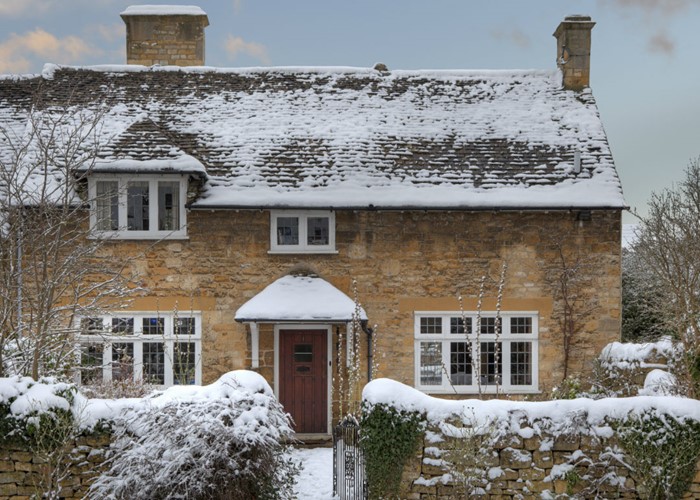The danger of short-term mortgage deals

Why a short-term mortgage deal could leave you stuck with your lender for much longer than you think.
The decision of whether to take a fixed or a tracker rate is one of the biggest mortgage choices you need to make. And it's been a hot topic during 2009, with the tide of opinion turning on a sixpence, or rather a swap rate.
But, of course, it's always been the case that some borrowers prefer fixed rates while others like variable deals. And what is being touted as the 'right' type of mortgage simply might not suit your circumstances.
What is different this year is just how little confidence any of us can have in predicting the future economic landscape - base rate, mortgage rates, house prices, and inflation - we haven't a clue. Of course, we never really did, as has been so clearly illustrated in the past two years.
Another big difference in 2009 is that there is now an extra decision to be made when you choose your homeloan, and it can have a huge impact on your finances a few years down the line.
Long-term lovers
Deciding the duration of your mortgage deal has never been of much importance to UK borrowers because we all tended to go for 2-year fixed rates, 2-year trackers or 2-year discounted rates.
Easy.
Traditionally there have been very few long-term fixed rate options, and those on offer were poorly priced compared with the 'hot off the shelves' short-term deals. And, besides, we didn't like to think too far ahead thank you very much!
How times have changed.
Experts have spent most of 2009 telling us that long-term fixed rates are the way forward and five-year deals in particular give us a soupcon of safety in this unpredictable world. In times of volatility a little certainty goes a long way.
There has been a significant increase in the number of borrowers asking for long-term fixed rates over the first half 2009. And who can blame them for wanting to lock in to five-year fixed rates under 5% (and even 4%) earlier this year?
Even with the significant increases in fixed rates during June, they offer substantial benefits on top of the obvious payment security, particularly for those who are putting down relatively small deposits.
Safety first
If you are borrowing big, a long-term fixed rate can really make sense.
Say, for example, you can only muster a 10% deposit and therefore your loan-to-value or LTV ratio is 90%. The LTV is your mortgage as a percentage of the value of your property.
At 90% LTV, your mortgage choices are limited and long-term fixed rates are even more expensive.
But you are balanced on a precipice. If your LTV rises further (which could happen if house prices continue to fall), you will effectively be removed from the remortgage market, where no lender bar your existing one will accept you. Borrowing over 90% is nigh on impossible, and this is not expected to change soon.
In the short term, house prices are too volatile to bank on your LTV reducing. They may have increased slightly in the last three months (according to some, but not all indices) but the consensus is that we are still bumping along the bottom.
Taking out a short-term rate at 90% LTV with the hope that rising house prices will lower it would take a brave borrower indeed. After all, the opposite could happen and your LTV could rise, which would leave you stuck on your lender's SVR. And in two year's time it is likely that average SVRs will be significantly higher than they are now.
What price security?
If you need to borrow at 90% LTV there is currently very little difference in cost between a two-year fixed rate and a five-year deal. Indeed, best buys for both hover around the 5.99% mark. (There are literally only a handful of variable options at 90% LTV, with HSBC and RBS offering the best rates at above 95% LTV).
With a two-year fixed deal you will be ready to remortgage in 2011, by which time house prices may not have had sufficient time to recover, and your LTV could still be too high to remortgage elsewhere.
Plus interest rates may well increase significantly, as expected. Imagine if your lender's SVR has increased to 8% or even higher - you could be stuck on that rate with no opportunity to remortgage elsewhere.
If you take a five-year deal at 5.99% you know exactly what your repayments will be until 2014. Clearly you are paying a premium for the long-term security and high LTV borrowing.
But after five years the housing market will have had more time to recover, and you will have had the chance to gain some equity in your home. This would reduce your LTV, and give you a much wider choice of remortgage options. By then mortgage rates could be higher or lower - it's impossible to predict.
Of course, there are no guarantees either way, but it is reasonable to assume that a housing market recovery is more likely to have occurred after five rather than two years. And, I believe it is very likely that rates will be significantly higher in 2011 than they are now.
If you don't have any room for manoeuvre when it comes to your LTV ratio (i.e. you need to borrow 90%), a longer-term fixed rate not only offers payment security, it also gives you less chance of coming to the end of your deal and finding yourself with nowhere to remortgage.
Fingers crossed in five years the mortgage market will be a very difference place.
Compare mortgages with lovemoney.com
More: When not to fix your mortgage | Stop overpaying your mortgage!
Comments
Be the first to comment
Do you want to comment on this article? You need to be signed in for this feature